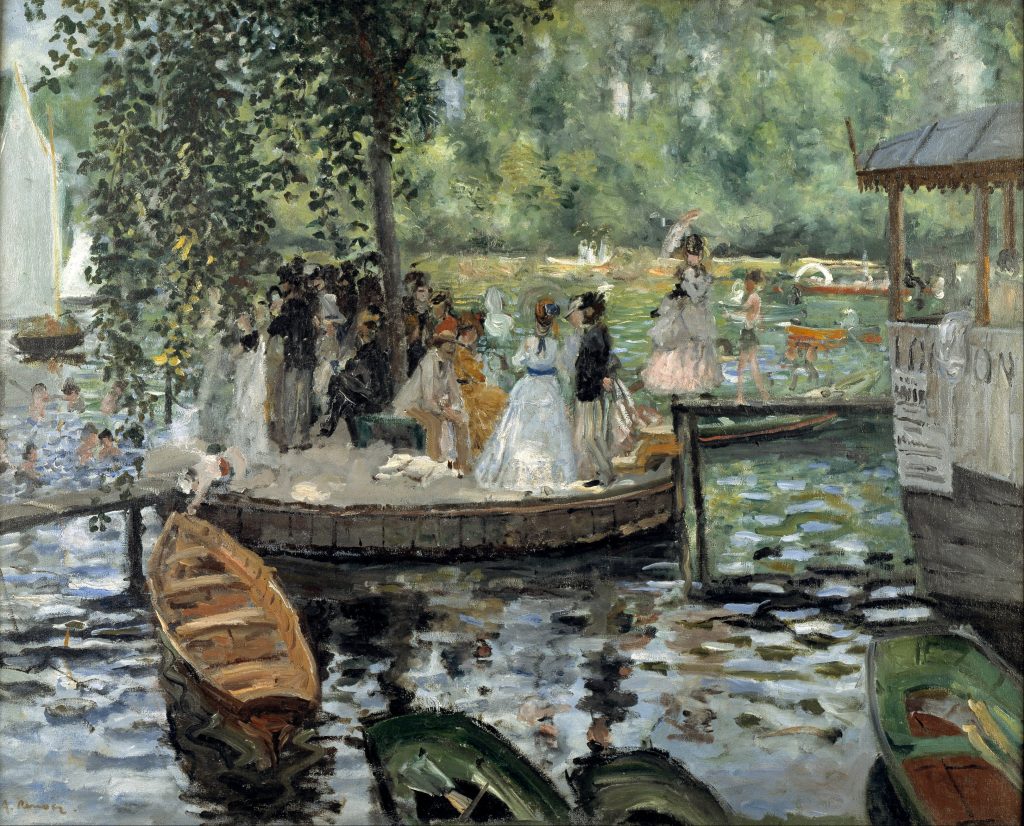Chapter 11.3: Modern Art, 1850-1960
Modern art, painting, sculpture, architecture, and graphic arts are characteristic of the 20th and 21st centuries and of the later part of the 19th century. Modern art embraces a wide variety of movements, theories, and attitudes whose modernism resides particularly in a tendency to reject traditional, historical, or academic forms and conventions in an effort to create an art more in keeping with changed social, economic, and intellectual conditions. The beginnings of modern painting cannot be clearly demarcated, but there is general agreement that it started in 19th-century France.
People use the term “modern” in a variety of ways, often very loosely, with a lot of implied associations of new, contemporary, up-to-date, and technological. We know the difference between a modern society and one that remains tied to the past and it usually has less to do with art and more to do with technology and industrial progress, things like indoor plumbing, easy access to consumer goods, freedom of expression, and voting rights. In the 19th century, however, modernity and its connection with art had certain specific associations that people began recognizing and using as barometers to distinguish themselves and their culture from earlier nineteenth-century ways and attitudes.

Chronologically, Modernism refers to the period from 1850 to 1960. It begins with the Realist movement and ends with Abstract Expressionism. That’s just a little over one hundred years. During that period the western world experienced some significant changes that transformed Europe and the United States from traditional societies that were agriculturally based into modern ones with cities and factories and mass transportation.
The Avant Garde
The avant garde is a term used to identify artists whose painting subjects and techniques were radical, setting them apart from the more traditional or academic styles, but not with any particular political ideology in mind. Avant garde became a kind of generic term for a number of art movements centered on the idea of artistic autonomy and independence. Realists painters such as Manet and impressionists such as Renoir and Monet epitomized the meaning of this term given their solid rejection of traditional art themes and technique. However, the avant garde was never a cohesive group of artists and what was avant garde in one nation was not necessarily the same in others.

Media Attributions
- Figure 1. Edouard Manet, A Bar at the Folies-Bergère, 1882, oil on canvas (The Courtauld Gallery, London Provenance: Courtauld, Samuel; gift; 1934; Image source: © The Samuel Courtauld Trust, The Courtauld Gallery, London, via ArtStor. Used with permission. For educational use only)
- Figure 2. Pierre-Auguste Renoir, At La Grenouillère. 1869, oil on canvas. During the summer of 1869, Monet and Renoir set up their easels at La Grenouillère, a boating and bathing resort on the Seine River, not far from Paris. Monet noted on September 25, “I do have a dream, a painting, the baths of La Grenouillère, for which I have made some bad sketches, but it is only a dream. Renoir, who has just spent two months here, also wants to do this painting” (The Metropolitan Museum of Art; Image source: Google Arts & Culture. Used with permission. For educational use only)
Candela Citations
- Becoming Modern, An Introduction. Authored by: Dr. Parme Giuntini. Provided by: Smarthistory. Retrieved from: https://smarthistory.org/becoming-modern-an-introduction/. License: CC BY-NC-SA: Attribution-NonCommercial-ShareAlike

